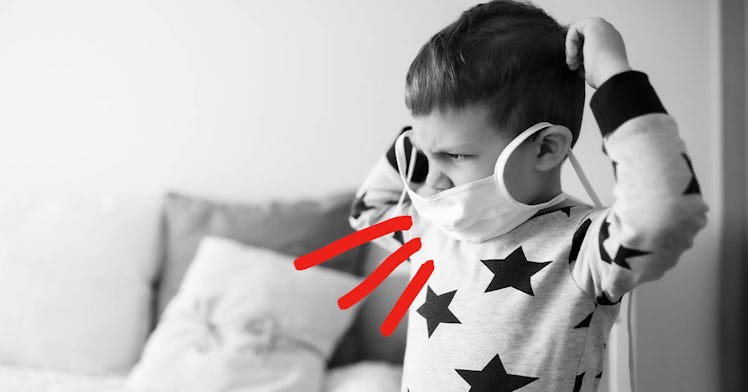Toddlers, Babies Spread COVID-19 at Home Much More Than Teens
A new study has found that very young kids spread COVID more than teens. Here's why that matters.

A new study out of a Canadian public health agency has found that although babies and toddlers are less likely to get COVID than big kids and teenagers, they are more likely than older kids to spread the virus to their household once they do contract the virus.
The study should not be seen as a confirmation that babies and toddlers have a major driving role in the COVID-19 pandemic, but rather that very young children can be a significant vector of the virus if they do get infected — an increasing reality as schools, daycares, and pre-kindergarten classrooms open up across the country in the coming weeks.
The study was conducted by looking at nearly 6,300 Canadian households. Researchers looked specifically at households in which the first case — otherwise known as the index case — was seen in a person under 18 years old. Then they measured the spread of the virus within the household.
The researchers found that babies and toddlers, though a small share of index cases (only 13 percent compared to 38 percent for 14- to 17-year-olds) made up the largest proportion of COVID-19 spread.
The study, published in JAMA Network on August 16, largely chalks up the fact that very young children (kids from infancy to age 8) have a higher likelihood of transmitting the virus to household members to the explanation that “younger children are not able to self-isolate from their caregivers when they are sick, irrespective of the timing or testing.”
In other words, very young kids require a lot of hands-on attention from mom and dad — being held, fed, bathed, and played with cannot be avoided even if a toddler is positive with COVID-19. Meanwhile, a 17-year-old can easily, if not comfortably, self-isolate in a bedroom for two weeks after a positive case. It’s also possible that very young children have higher viral loads than people of other ages.
The significance of the study lies in the fact that for quite some time during the pandemic, it was believed that very young children were unlikely to get and spread COVID-19. But that data was biased because children were stuck at home, not interacting with others, and not in their regular environments, leaving them less likely to encounter other COVID-19 positive kids or adults as entire families isolated from one another.
Kids are also more likely to be asymptomatic when they have COVID-19, which may make them more likely to spread the virus to unsuspecting family members. Per the study: “asymptomatic status and testing delays had strong gradient effects on infectivity.”
Still, it’s clear that toddlers can be a major vector of household transmission. And as daycares reopen and cases skyrocket across the country due to the Delta variant, this could mean that very young children could be a meaningful vector of spread in the coming months.
Edith Bracho Sanchez, an assistant professor of pediatrics at Columbia University Irving Medical Center, told ABC News that the significance of the study is that it proves “the opposite of what we’ve been told in the past. It just shows how humble we have to be when it comes to children and this virus. We always knew children could get it, could transmit it, and could get sick with COVID. I think we’re learning more and more just how much.”